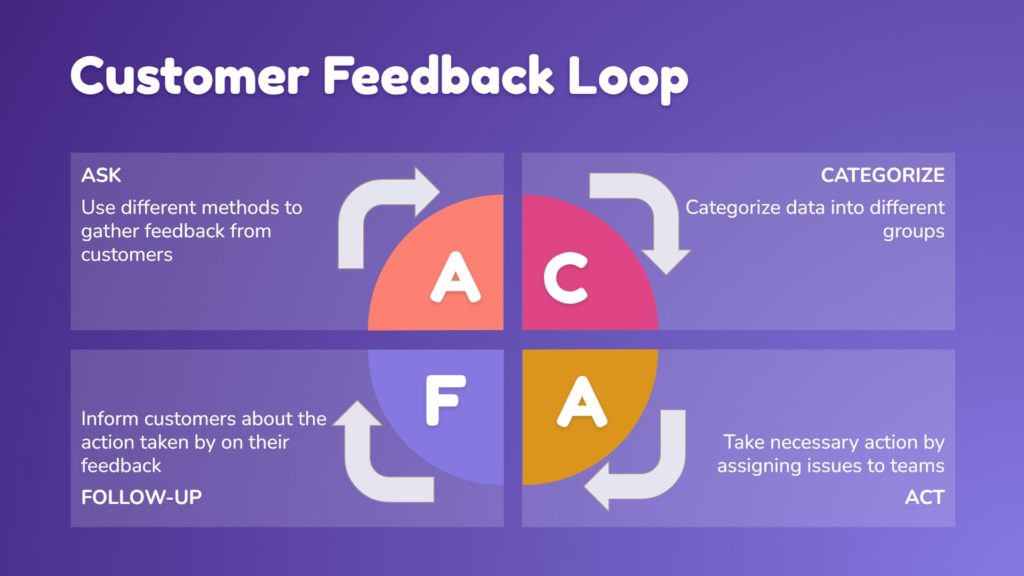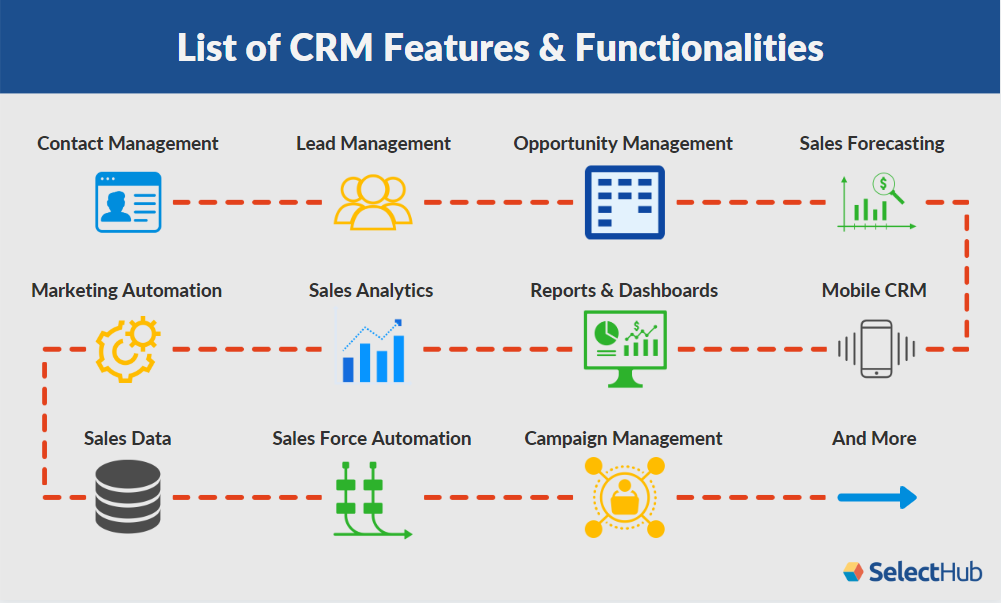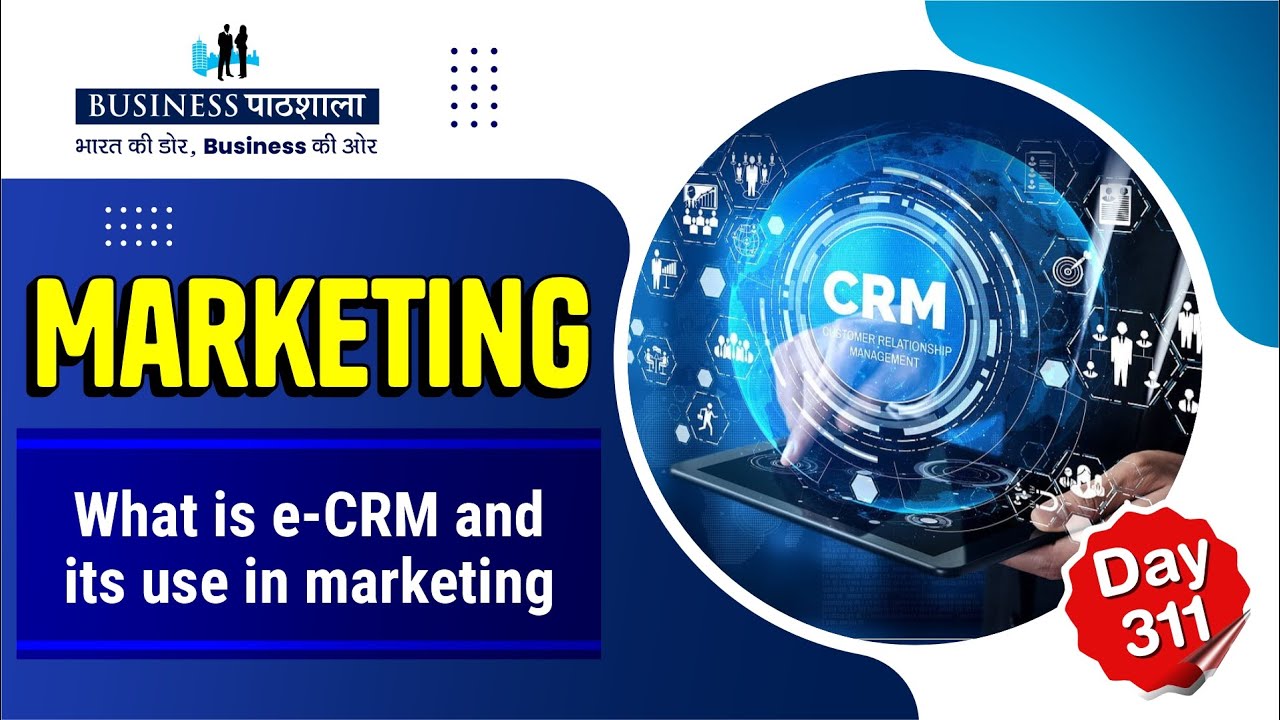
The Symphony of Success: CRM, Marketing, and Customer Feedback in Harmony
In the dynamic world of business, staying ahead of the curve is not just a goal; it’s a necessity. Companies are constantly seeking that elusive edge, that secret ingredient that will propel them to the forefront of their industry. While there’s no single magic bullet, a powerful combination of Customer Relationship Management (CRM), strategic marketing, and, crucially, actionable customer feedback, forms a symphony of success that can transform a business from the inside out. This article delves into the intricate interplay of these three elements, revealing how they work together to foster growth, boost customer loyalty, and ultimately, drive profitability.
Understanding the Pillars: CRM, Marketing, and Customer Feedback
CRM: The Heart of Customer Relationships
At the core of any successful business lies the ability to build and nurture strong customer relationships. This is where CRM comes into play. CRM is more than just a software; it’s a philosophy, a strategic approach to managing all your interactions with current and potential customers. It’s about understanding their needs, preferences, and behaviors, and tailoring your approach accordingly. A well-implemented CRM system acts as a central repository for all customer data, allowing you to:
- Centralize Customer Information: Store all customer interactions, purchase history, contact details, and preferences in one accessible location.
- Improve Communication: Personalize your communications, ensuring that each customer feels valued and understood.
- Automate Processes: Streamline repetitive tasks, such as email marketing campaigns and follow-up reminders, freeing up your team to focus on more strategic initiatives.
- Enhance Sales Efficiency: Provide sales teams with the tools and insights they need to close deals more effectively.
- Boost Customer Service: Equip your customer service representatives with the information they need to resolve issues quickly and efficiently.
The benefits of CRM are far-reaching, from increased sales and improved customer retention to enhanced operational efficiency. Choosing the right CRM system for your business is crucial, as it should align with your specific needs and goals. Consider factors such as scalability, integration capabilities, and user-friendliness when making your selection.
Marketing: The Art of Reaching and Engaging Your Audience
Marketing is the engine that drives customer acquisition and brand awareness. It’s the art of reaching your target audience with the right message, at the right time, through the right channels. In today’s digital landscape, marketing is more complex than ever, with a multitude of channels and strategies to choose from. Effective marketing goes beyond simply promoting your products or services; it’s about building relationships, creating value, and establishing trust. A well-crafted marketing strategy should encompass:
- Target Audience Identification: Define your ideal customer profile, including their demographics, interests, and behaviors.
- Channel Selection: Choose the marketing channels that are most likely to reach your target audience, such as social media, email marketing, content marketing, and paid advertising.
- Content Creation: Develop compelling and engaging content that resonates with your target audience, providing value and establishing your brand as a thought leader.
- Campaign Management: Plan, execute, and monitor your marketing campaigns, ensuring that they are aligned with your business goals.
- Performance Measurement: Track key metrics, such as website traffic, lead generation, and conversion rates, to assess the effectiveness of your marketing efforts.
Marketing and CRM are not independent entities; they are inextricably linked. CRM provides the data and insights needed to inform your marketing strategies, while marketing generates leads and opportunities that can be nurtured through your CRM system.
Customer Feedback: The Voice of Your Customers
Customer feedback is the lifeblood of any successful business. It’s the voice of your customers, telling you what they like, what they dislike, and what they need. Gathering and analyzing customer feedback is essential for:
- Understanding Customer Needs: Identify unmet needs and pain points, allowing you to develop products and services that better meet customer expectations.
- Improving Customer Experience: Identify areas where you can improve the customer experience, such as customer service, website usability, and product quality.
- Enhancing Product Development: Use customer feedback to inform your product development roadmap, ensuring that you are building products that customers actually want.
- Boosting Customer Loyalty: Show your customers that you value their feedback and are committed to improving their experience, which can lead to increased loyalty and advocacy.
- Identifying Opportunities for Innovation: Uncover new ideas and opportunities for innovation by listening to your customers’ suggestions and feedback.
Customer feedback can be gathered through a variety of channels, including surveys, online reviews, social media monitoring, and direct conversations. The key is to actively seek out feedback and to use it to drive continuous improvement. Think of it as an ongoing conversation with your customers, a dialogue that helps you refine your offerings and strengthen your relationships.
The Synergy: How CRM, Marketing, and Customer Feedback Work Together
The true power of these three elements lies in their synergy. When CRM, marketing, and customer feedback are integrated and aligned, they create a virtuous cycle that drives growth and success. Here’s how they work together:
1. Data-Driven Marketing: Fueling Campaigns with Customer Insights
CRM provides a wealth of data about your customers, including their demographics, purchase history, browsing behavior, and communication preferences. This data can be used to:
- Segment Your Audience: Divide your customers into different segments based on their characteristics and behaviors.
- Personalize Your Messaging: Tailor your marketing messages to resonate with each segment, increasing engagement and conversion rates.
- Optimize Your Campaigns: Track the performance of your marketing campaigns and make adjustments based on customer feedback and data analysis.
- Identify High-Value Customers: Focus your marketing efforts on the customers who are most likely to generate revenue and loyalty.
By leveraging CRM data, you can move away from generic, one-size-fits-all marketing and towards highly targeted, personalized campaigns that deliver real results. This approach is the essence of data-driven marketing, where every decision is informed by customer insights.
2. Closed-Loop Feedback: Turning Feedback into Actionable Insights
Customer feedback provides invaluable insights into your customers’ experiences. By integrating customer feedback into your CRM system, you can:
- Track Customer Sentiment: Monitor customer feedback to identify trends and patterns in customer satisfaction.
- Identify Pain Points: Pinpoint areas where customers are experiencing difficulties or dissatisfaction.
- Prioritize Improvements: Use customer feedback to prioritize improvements to your products, services, and customer experience.
- Close the Loop: Respond to customer feedback promptly and effectively, demonstrating that you value their input and are committed to resolving their concerns.
This closed-loop feedback system ensures that customer feedback is not just collected, but also acted upon. It transforms feedback from a passive data point into an active driver of improvement and innovation. This process builds trust and strengthens your relationship with your customers.
3. Customer-Centric CRM: Putting the Customer at the Heart of Everything
A customer-centric CRM system puts the customer at the heart of your business. It’s about understanding their needs, preferences, and behaviors, and tailoring your approach accordingly. By integrating customer feedback into your CRM system, you can:
- Gain a 360-Degree View of the Customer: Have a complete understanding of each customer’s interactions with your business, from initial contact to purchase and beyond.
- Personalize Customer Interactions: Tailor your communications and interactions to each customer’s individual needs and preferences.
- Provide Proactive Customer Service: Anticipate customer needs and proactively address potential issues.
- Build Long-Term Relationships: Foster strong, lasting relationships with your customers by demonstrating that you value their input and are committed to their satisfaction.
A customer-centric CRM system is more than just a technology; it’s a culture. It’s about making every decision with the customer in mind, from product development to customer service. This approach is at the heart of building a loyal customer base.
4. Measuring Success: Tracking Key Metrics
To truly understand the impact of CRM, marketing, and customer feedback, it’s essential to track key metrics. These metrics will tell you whether your efforts are paying off and where you can improve. Some key metrics to consider include:
- Customer Acquisition Cost (CAC): The cost of acquiring a new customer.
- Customer Lifetime Value (CLTV): The total revenue a customer is expected to generate over their lifetime.
- Customer Retention Rate: The percentage of customers who remain loyal to your business over a specific period.
- Customer Satisfaction Score (CSAT): A measure of customer satisfaction with your products, services, and customer experience.
- Net Promoter Score (NPS): A measure of customer loyalty and advocacy.
- Conversion Rates: The percentage of customers who complete a desired action, such as making a purchase or filling out a form.
By tracking these metrics, you can gain a clear understanding of the effectiveness of your CRM, marketing, and customer feedback efforts. This data can be used to make data-driven decisions, optimize your strategies, and drive continuous improvement.
Implementing the Strategy: A Step-by-Step Guide
Successfully integrating CRM, marketing, and customer feedback requires a strategic approach. Here’s a step-by-step guide to help you get started:
1. Define Your Goals and Objectives
Before you begin, it’s essential to define your goals and objectives. What do you want to achieve by integrating CRM, marketing, and customer feedback? Are you looking to increase sales, improve customer retention, or enhance customer satisfaction? Clearly defined goals will guide your strategy and help you measure your success.
2. Choose the Right CRM System
Selecting the right CRM system is crucial. Consider your business needs, budget, and technical capabilities when making your selection. Look for a system that offers features such as:
- Contact Management: To store and manage customer data.
- Sales Automation: To automate sales processes.
- Marketing Automation: To automate marketing campaigns.
- Customer Service Tools: To manage customer inquiries and support requests.
- Integration Capabilities: To integrate with other systems, such as your marketing automation platform and customer feedback tools.
Do your research, compare different CRM systems, and choose the one that best fits your needs.
3. Integrate Your Marketing and Customer Feedback Tools
Once you have chosen your CRM system, the next step is to integrate your marketing and customer feedback tools. This will allow you to share data between your systems and create a seamless customer experience. This may involve integrating your:
- Marketing Automation Platform: To sync customer data and track marketing campaign performance.
- Survey Tools: To collect customer feedback and integrate it into your CRM system.
- Social Media Monitoring Tools: To monitor customer conversations and track brand mentions.
- Help Desk Software: To track customer support interactions.
Ensure that all your tools are integrated properly to avoid data silos and ensure a unified view of your customers.
4. Develop a Customer Feedback Strategy
Develop a comprehensive customer feedback strategy that includes:
- Identifying Feedback Channels: Choose the channels that you will use to collect customer feedback, such as surveys, online reviews, and social media monitoring.
- Designing Surveys: Create surveys that are easy to complete and provide valuable insights.
- Analyzing Feedback: Analyze customer feedback to identify trends and patterns.
- Closing the Loop: Respond to customer feedback promptly and effectively.
A well-defined feedback strategy is critical for understanding your customers’ needs and improving their experience.
5. Train Your Team
Training your team is essential for ensuring that your CRM, marketing, and customer feedback strategies are implemented effectively. Provide training on:
- Using the CRM System: Teach your team how to use the CRM system to manage customer data, automate processes, and track customer interactions.
- Marketing Best Practices: Educate your team on marketing best practices, including content creation, campaign management, and performance measurement.
- Customer Service Skills: Train your team on customer service skills, such as active listening, empathy, and problem-solving.
- Feedback Handling: Explain how to handle and respond to customer feedback.
Make sure that your team is equipped with the knowledge and skills they need to succeed.
6. Monitor and Optimize Your Strategy
Continuously monitor and optimize your CRM, marketing, and customer feedback strategies. Track key metrics, analyze data, and make adjustments as needed. This is an ongoing process that requires constant attention and refinement. Here’s what you should do:
- Regularly Review Your Data: Analyze your data to identify trends and patterns.
- Make Adjustments: Based on your analysis, make adjustments to your strategies.
- Test and Experiment: Test different approaches and experiment with new ideas.
- Stay Flexible: Be prepared to adapt your strategies as your business and customer needs evolve.
This continuous improvement process will help you maximize the effectiveness of your efforts.
Challenges and Mitigation Strategies
While the benefits of integrating CRM, marketing, and customer feedback are substantial, there are also challenges to consider. Here are some common challenges and strategies for mitigating them:
1. Data Silos
Data silos can occur when data is stored in different systems and is not shared effectively. To mitigate this, ensure that your systems are integrated and that data is shared seamlessly between them. This can involve using APIs, data connectors, or a central data warehouse.
2. Lack of Integration
If your systems are not properly integrated, you will not be able to gain a complete view of your customers. Ensure that your systems are integrated and that data flows seamlessly between them. This will allow you to gain a 360-degree view of your customers and personalize your approach.
3. Poor Data Quality
Poor data quality can lead to inaccurate insights and ineffective marketing campaigns. Implement data quality control measures, such as data validation and data cleansing, to ensure that your data is accurate and reliable. This will help you make better decisions and improve your results.
4. Resistance to Change
Implementing new systems and processes can be met with resistance from your team. To mitigate this, involve your team in the planning and implementation process. Provide training and support to help them adapt to the new systems and processes. Also, communicate the benefits of the changes to your team.
5. Lack of Resources
Implementing and maintaining CRM, marketing, and customer feedback strategies can require significant resources, including time, money, and personnel. Develop a realistic budget and allocate resources accordingly. Prioritize your initiatives and focus on the areas that will have the greatest impact. If necessary, consider outsourcing some tasks to third-party vendors.
The Future of Customer-Centric Business
The convergence of CRM, marketing, and customer feedback is not just a trend; it’s the future of customer-centric business. As technology continues to evolve, businesses will need to become even more adept at gathering, analyzing, and acting on customer data. Here are some trends to watch:
- Artificial Intelligence (AI): AI is already transforming the way businesses interact with customers. AI-powered chatbots, personalized recommendations, and predictive analytics are becoming increasingly common.
- Personalization at Scale: Customers expect personalized experiences. Businesses will need to leverage data to deliver highly targeted and relevant content and offers.
- Omnichannel Customer Experience: Customers interact with businesses across multiple channels. Businesses will need to provide a seamless and consistent experience across all channels.
- Data Privacy and Security: Data privacy and security are becoming increasingly important. Businesses will need to be transparent about how they collect and use customer data and to protect customer data from unauthorized access.
- Voice of the Customer (VoC) Platforms: These platforms are becoming more sophisticated, offering advanced analytics and insights into customer sentiment and behavior.
Businesses that embrace these trends and prioritize customer-centricity will be best positioned for success in the years to come. The focus is shifting from simply selling products or services to building lasting relationships with customers.
Conclusion: A Winning Formula
In conclusion, the integration of CRM, marketing, and customer feedback is a winning formula for business success. By leveraging these three elements in a strategic and coordinated manner, businesses can build stronger customer relationships, drive growth, and achieve sustainable profitability. This approach is not just about using technology; it’s about fostering a customer-centric culture where every decision is made with the customer in mind. Embrace this symphony of success, and you’ll be well on your way to unlocking your business’s full potential. It is a journey, a continuous process of learning, adapting, and improving. The rewards, however, are well worth the effort – a loyal customer base, a thriving business, and a future filled with opportunity.

